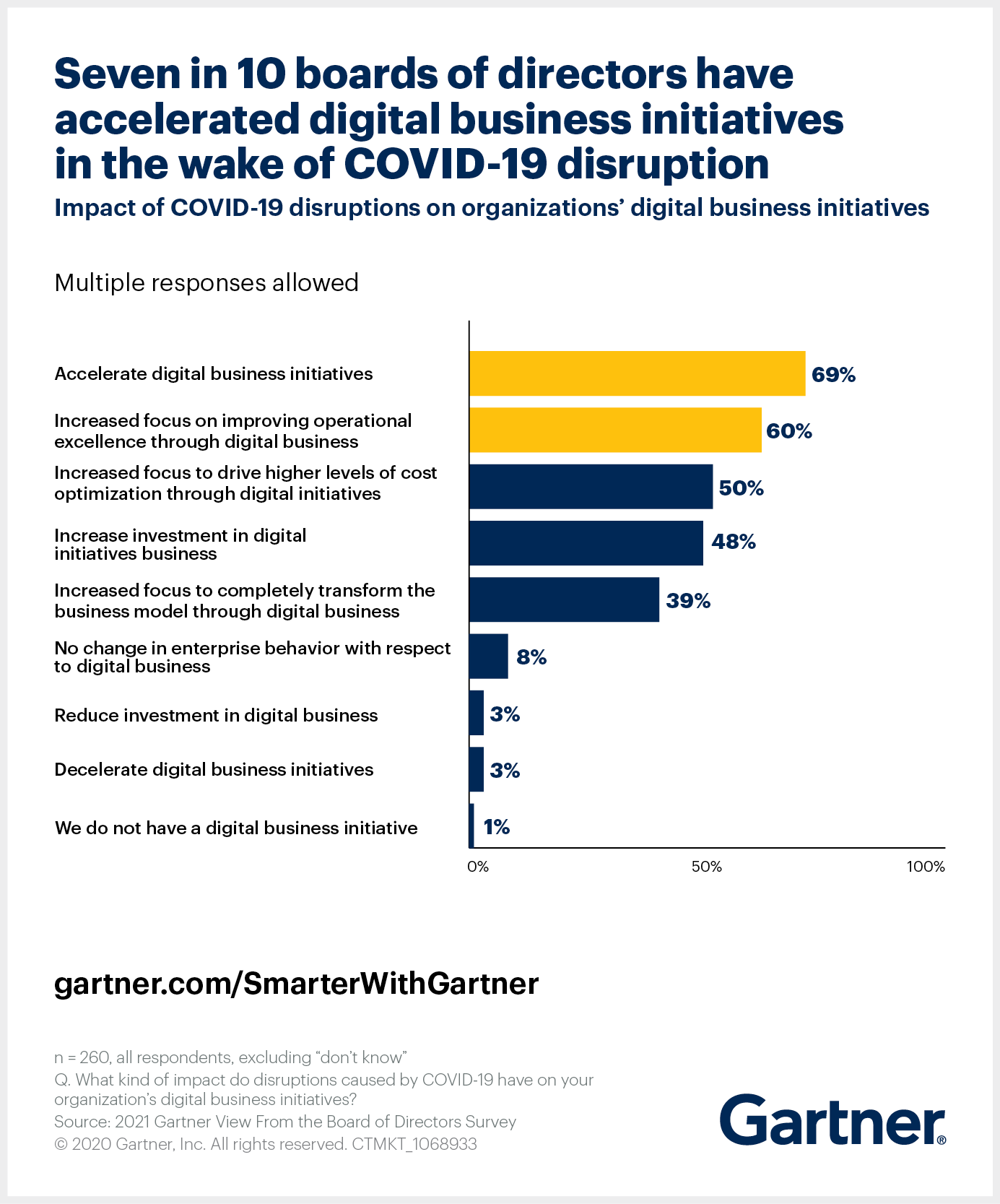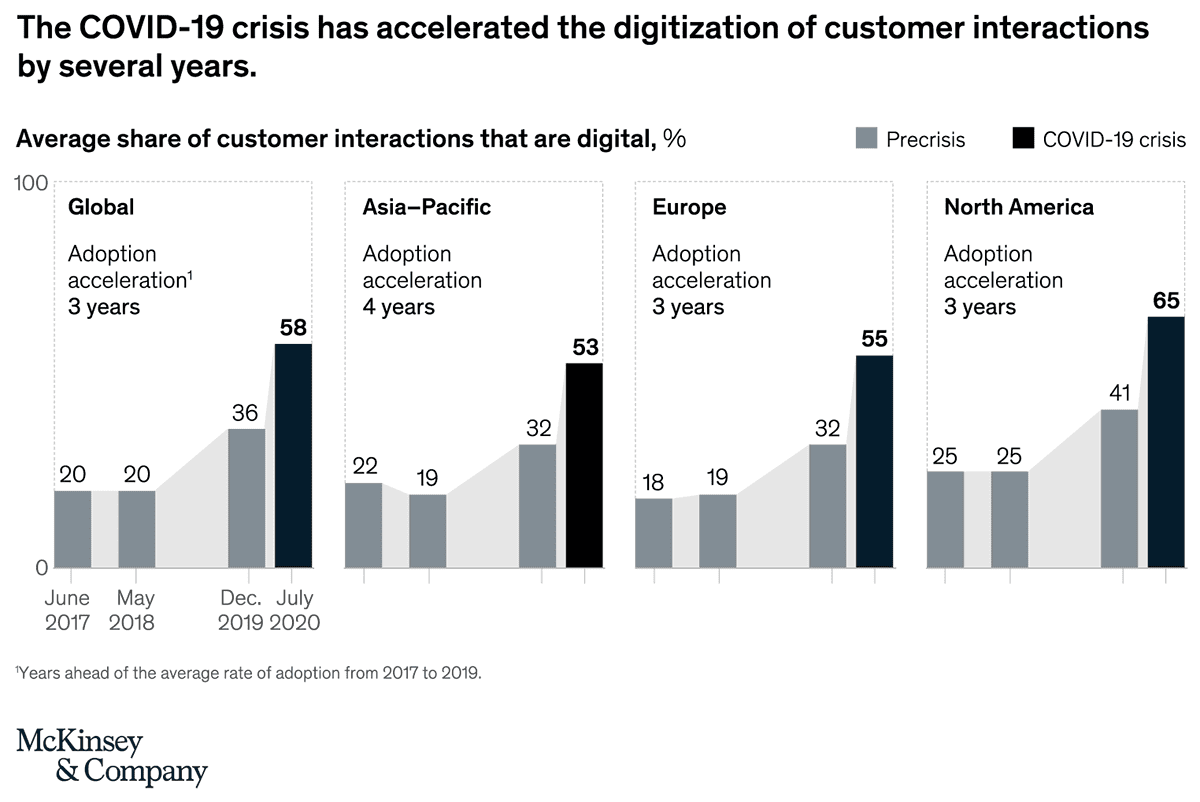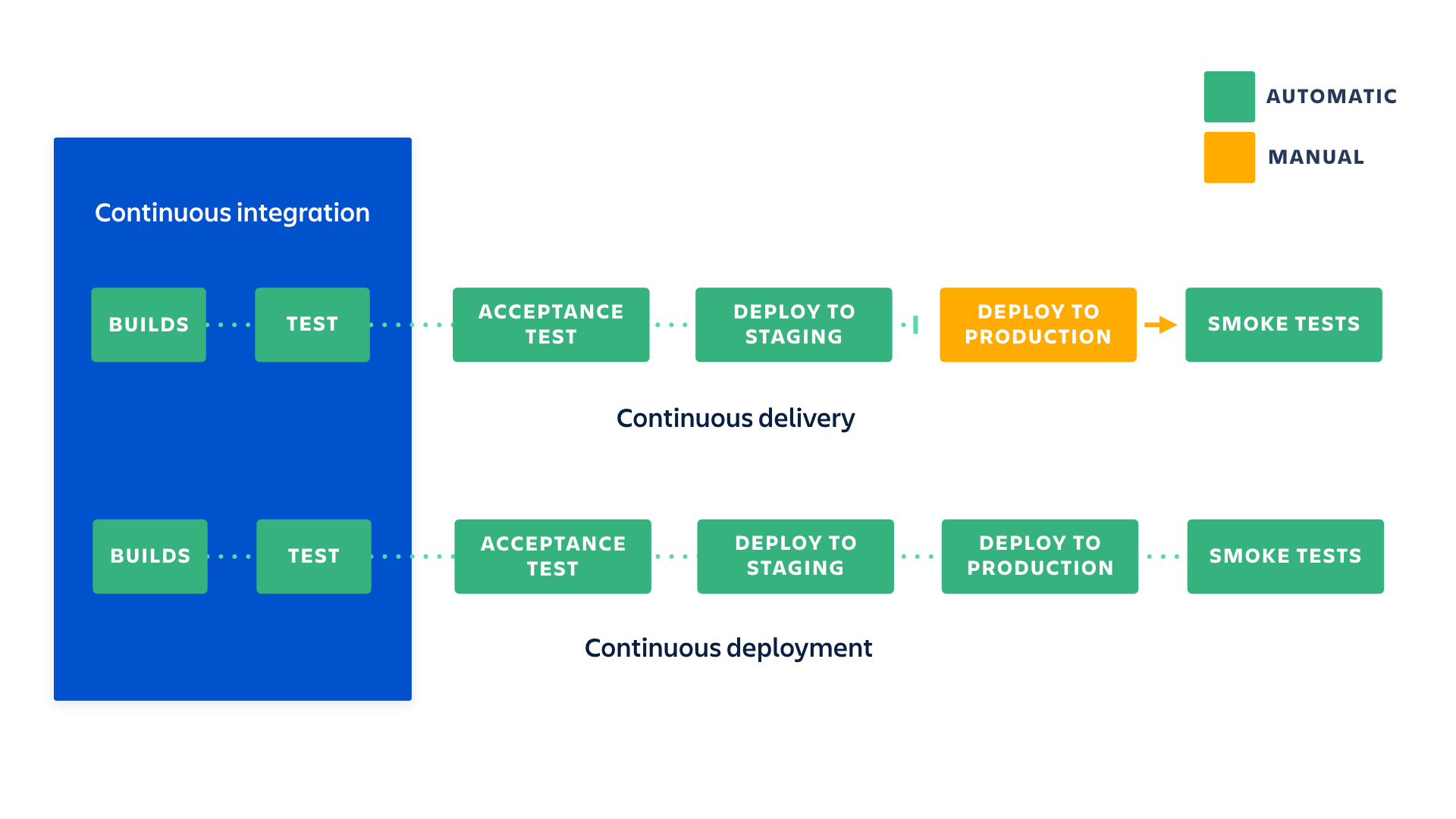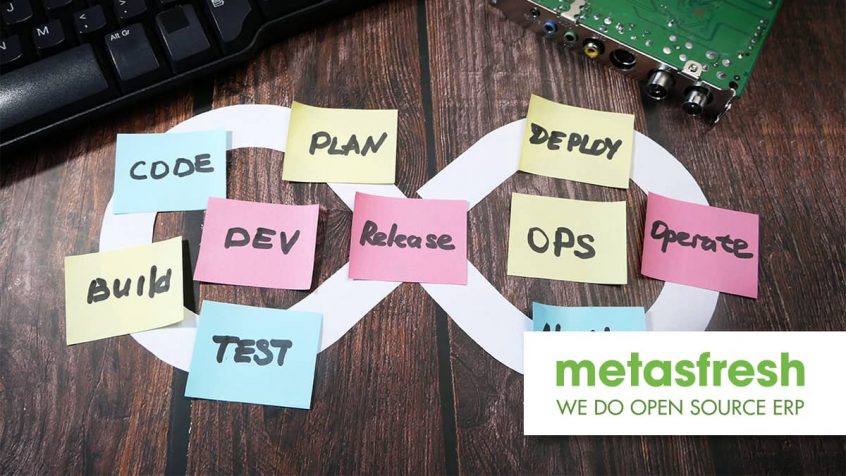Share this Post
Digitalisation is fast becoming a top priority for organisations of all shapes and sizes — spurred on, of course, by the challenges and disruption thrown up by the coronavirus pandemic. In fact, according to a Gartner Board of Directors survey, seven in ten organisations have accelerated their digital business initiatives as a result of the economic and social impact of the pandemic.

COVID-19 Accelerates Digital Strategy Initiatives. —Source: gartner.com
Meanwhile, a recent McKinsey survey found that COVID-19 has accelerated the digitisation of customer and supply-chain interactions by three to four years.

During the pandemic, consumers have moved dramatically toward online channels. —Source: mckinsey.com
However, it’s not just the pace of transformation that has changed. The impact has been so immediate and intensive that, as a Deloitte report on the state of digital transformation the lens of COVID-19 puts it, a “slow, but steady” pre-COVID-19 approach to transformation no longer works. And, more than ever before, there is a strategic imperative to create an orchestrated ecosystem of front-end and back-office systems — a historic challenge for many organisations.
ERP and Post-Covid Digital Transformation
A 2019 report from Forrester Research describes how most organisations focus their transformation programs on creating new customer experiences and how even the most ambitious disruptors tend to ignore ERP systems.
However, a new study from IDC reveals that enterprise IT investments are now targeting projects that either address the deficiencies exposed by the pandemic or support emergent operational capabilities required in a post-COVID world. As a result, the modernization of ERP systems, the core engine of every organisation, has become a key focus of transformation.
But, as Forrester pointed out in its report, there has not been any real modernization in the core apps market over the last 20 years. And, as we detailed in a previous article on the ‘Anatomy of a Modern ERP System’, the case for ERP modernization has never been stronger.
Given the pace at which enterprise technologies and marketplace dynamics evolve, modern ERP systems need to be designed for the future. They need to be continually updated with emerging technologies and best-of-breed capabilities that enable businesses to adapt and evolve without having to periodically resort to high-cost low-value upgrades and migrations.
This is where modern software development and delivery methodologies like Continuous Integration (CI), Continuous Delivery/Deployment (CD), and DevOps can help ERP customers stay on top of changing market conditions, pursue new growth opportunities, and focus on continuous innovation.
What Is CI/CD?
Continuous integration (CI) is a central principle of most modern software development projects. CI and CD (Continuous Delivery or Continuous Deployment) are practices that enable the planning and orchestration of such complex, iterative development cycles.

CI/CD – How the practices relate to each other. —Source: atlassian.com
Continuous Integration
Continuous integration is a software development practice focused on the early stages of the development pipeline when code is built and undergoes initial testing. During this stage, CI provides a range of tools and automation techniques to enable multiple developers to create builds and regularly integrate code into a shared repository for testing. The principle is to encourage development teams to merge incremental changes back to the main branch as frequently as possible, even several times a day, rather than wait to commit more elaborate changes infrequently.
These changes are then validated by triggering a build and running automated tests to identify any integration errors. Automated testing is a critical part of CI, as it ensures that integrating new commits into the main branch does not break the application.
Continuous Delivery
This is an extension of continuous integration where all changes made during the build stage, including new features, configuration changes, bug fixes, and experiments, are continuously deployed to testing and production. Continuous Delivery automates the release process and enables one-click deployments with the frequency (daily, weekly, fortnightly, etc.) determined by organisational requirements. As with CI, CD emphasises the benefits of frequently deploying small convenient batches to production as quickly as possible.
Continuous Deployment
As with Continuous Delivery, the objective here is to increase the speed and frequency at which software is built, tested, and released. Continuous deployment goes a step further in that all qualified main branch changes that have cleared automated testing and passed the CI stage are automatically deployed without any human intervention. Where continuous delivery relies on a release schedule and strategy, continuous deployment focuses on the actual deployment of code.
Benefits of CI/CD
From the software development perspective, CI/CD offers numerous benefits.
Iterative building, testing, and integrating code in small batches makes it much easier to isolate faults early on and address them effectively. This also helps accelerate mean time to repair (MTTR).
CI/CD significantly improves test reliability, as it enables developers and QAs to write positive and negative tests to address new changes and ensure Continuous Reliability within a CI/CD pipeline.
CI/CD creates a robust feedback loop between development and QA teams that streamlines the process of deploying and testing elements in staging environments during the development cycle. The feedback loop can also be extended beyond the development environment to understand how applications perform with users that enable further upgrades/improvements.
Continuous integration, testing, repairs, and deployment means that software can be released at a faster pace. The atomic nature of the CI/CD process encourages low-risk experimentation, as it’s much easier to fix or roll back in case of any issues.
Increasing code quality with CI/CD and automation helps reduce the cost of development and increase ROI. CI/CD also helps create more transparency and accountability across the development cycle.
Above and beyond all this, CI/CD also translates into enhanced business value for customers.
CI/CD enables application development to evolve in line with evolving customer needs. Development teams can experiment with new technologies to update applications and deliver new features that are aligned with customer expectations and industry trends. Software organisations with an effective CI/CD pipeline can quickly respond to customer needs and test and fine-tune new features with actual end-users. This means that customers get early access to best-in-class features and capabilities that allow them to extract more business value from their applications.
metasfresh ERP — Made for Continuous Change
At metasfresh, we understand that our ERP system is the core engine that allows our customers to quickly adapt and evolve along with changing business dynamics. As a result, we rely on continuous innovation, integration, and deployment to solve our customers’ problems and enable them to maximize the business value of our solutions.
Our weekly release cycle means that we are constantly rolling out the latest improvements, features, and capabilities to our customers, while our open-source model enables us to specifically design our ERP solutions to customer requirements. Our evolutionary approach to software development means that we are constantly experimenting with new ideas, features, and technologies that enable our customers to scale and innovate into the future.
Talk to us here at metasfresh to learn more about how we keep our ERP solution forever young. The beauty of metasfresh ERP is that our CI/CD approach means that metasfresh will never become obsolete — no matter what changes and disruptions the world may throw up in the future, we can react, adapt, and keep pace so our customers can easily adapt, too.
Since 2006, we have been developing our metasfresh ERP software non-stop with open source components and under the open source licenses GPLv2 and GPLv3. Our mission is to enable each and every company to access a powerful ERP system that supports digital transformation and fuels corporate growth. Get in touch today for more information and insights.
Share this Post



